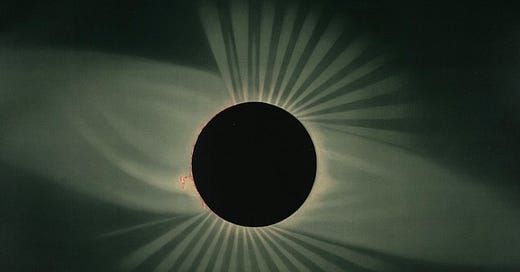The study of paranormal phenomena in the Philippines looks into experiences that are recognized within the field of parapsychology—experiences such as telepathy, mediumship, and mind-matter interaction. However, these phenomena must be placed in the context of Philippine culture. Thus, it may also be necessary to look into what is considered “supernatural”, such as duwende1 manifestation, the effects of kulam2, and psychic surgery.3 Much has been written about this topic, especially in early days of social science research in the Philippines, as foreign researchers grapple with the unique and unfamiliar in these lands. Today, Jaime T. Licauco is perhaps one of the most well-known writers on Philippine parapsychology, with multiple books on folk healing and psychic powers.4
The paranormal has always been an area of great interest for many within the field of human science, particularly within psychology, where it is considered to be a manifestation of the natural powers of the human mind. Fr. Jaime C. Bulatao (1922-2015) is a Filipino priest-psychologist who is known for his studies on consciousness as it manifests in psychic phenomena, magical practices, and spirits of folklore.5 He said that the Filipino worldview was transpersonal, which means that it is not limited to body or time—it goes beyond the self and towards the world and other people.6 This transpersonal worldview manifests through Filipino beliefs in spirits, as well as in certain people who can supposedly interact with them. The world is thus believed to be filled with mysterious forces that have tangible effects.7 This transpersonal worldview perspective is similar to what is known as the “post-materialist” perspective, which is a paradigm that questions the mainstream materialist model. The post-materialist perspective states that consciousness is not something that emerges from the brain. Rather, it is something that is fundamental to the universe.8 Bulatao uses the metaphor of eggs to explain the transpersonal worldview—one can imagine eggs frying in a pan, where the yolks are separate but the whites fuse together. Individual consciousness, therefore, is part of larger consciousness.
This worldview has many implications, among which are the following:
Individual consciousness, which is still a mystery in the field of cognitive psychology, may have qualities of what religion has called the “soul.” Therefore, the transpersonal worldview affirms what humankind has already known (albeit metaphorically) and bridges the gap between ancient wisdom and modern knowledge.
Folktales and anecdotes regarding paranormal or mystical phenomena may be metaphors for various qualities of consciousness. A person might use the metaphor of spirits, saints, demons, or duwende to explain trance states, telepathic communication, and poltergeist phenomena. Understanding how traditional healers (e.g. shamans, priests, albularyos, etc.) effectively interact with the spirit world may allow clinical practitioners (e.g. psychotherapists, medical doctors, etc.) treat psycho-spiritual ailments.
Further, the idea that consciousness is a fundamental aspect of the universe is not new to practitioners of magic; the first Hermetic principle is that “All is Mind.” That is, the universe is mental, and all tangible realities come from this mind.9 In the classic occult text The Kybalion, it is said:
THE ALL (which is the Substantial Reality underlying all the outward manifestations and appearances which we know under the terms of "The Material Universe"; the "Phenomena of Life"; "Matter"; "Energy"; and, in short, all that is apparent to our material senses) is SPIRIT which in itself is UNKNOWABLE and UNDEFINABLE, but which may be considered and thought of as AN UNIVERSAL, INFINITE, LIVING MIND. It also explains that all the phenomenal world or universe is simply a Mental Creation of THE ALL, subject to the Laws of Created Things, and that the universe, as a whole, and in its parts or units, has its existence in the Mind of THE ALL, in which Mind we "live and move and have our being." This Principle, by establishing the Mental Nature of the Universe, easily explains all of the varied mental and psychic phenomena that occupy such a large portion of the public attention, and which, without such explanation, are non-understandable and defy scientific treatment.
Transpersonal psychology has a lot of overlap with parapsychology, as both of these fields explore the functions of consciousness, which usually manifests in spiritual or paranormal ways.10 It seems that the Filipino indigenous worldview, which considers the possibility of spirits when explaining what are potentially paranormal phenomena, seems to be in alignment with all these concepts. If one were to fully understand the mysteries of the Filipino psyche, one might have to start taking folktales a little more seriously.
Duwende: small, mischievous beings.
Kulam: magic that is usually done with harmful intentions.
Enriquez, V.G., Balde, P.J., & Bernardo, M.A. (1989). Ang kababalaghan at parasikolohiya. Akademya ng Sikolohiyang Pilipino.
Licauco’s books, however, are usually found on the New Age shelf—setting it aside as a niche interest or, to some religious people, “demonic.” It may be good to revive these studies as a genuinely academic pursuit, though stigma against this field of human experience has discouraged actual research into it. So, folks who are more likely to experience paranormal phenomena are often doubted, and ardent researchers are often shunned.
Cervantes, C.L. (2022). There’s a Duwende on my Shelf: The Parapsychological Studies of Fr. Jaime C. Bulatao, SJ. International Journal of Transpersonal Studies, 41(1), 1–5.
Bulatao, J.C. (1992). Filipino Transpersonal World View. In Phenomena and their interpretation: Landmark essays 1957-1989. Ateneo de Manila University Press.
Cervantes, C.L. (2023). Deep ecology, nature spirits, and the Filipino transpersonal worldview. International Journal of Transpersonal Studies Advance Publication Archive.
Beauregard, M., Trent, N. L., & Schwartz, G. E. (2018). Toward a postmaterialist psychology: Theory, research, and applications. New Ideas in Psychology, 50, 21–33.
Three Initiates (2004). The Kybalion. Project Gutenberg. (Originally published 1912)
Friedman, H.L., Radin, D., & Krippner, S. (2021). Parapsychology and transpersonal psychology in dialogue: Could these two movements be brought in better alignment? International Journal of Transpersonal Studies, 40(1), 123–135.




